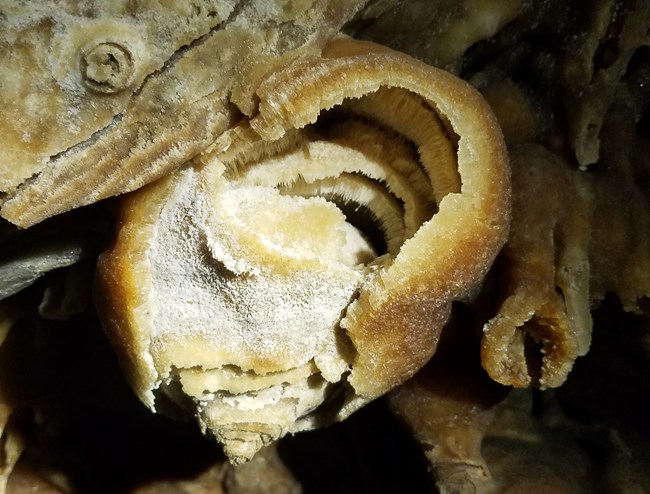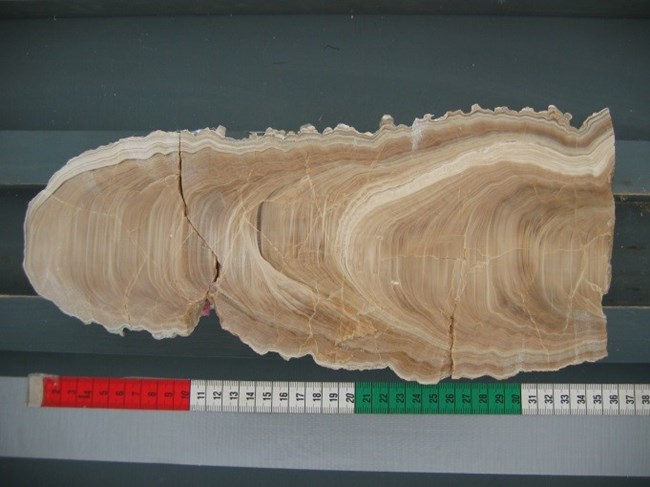
NPS Photo An Underground GemLehman Caves is known for its highly decorated chambers. A tour of Lehman Caves allows you to experience some of the more common cave speleothems, as well as some rare speleothems that are seen in very few places on planet earth.SpeleothemsMany speleothems are found in Lehman Caves. Table 1 provides an overview.Table 1. Selected speleothem types in wild caves (based on Hill and Forti 1997, Palmer 2007).
For more detailed information describing the formation of caves (speleogenesis), explore the Formation of the Cave webpage.
The Chemical Process Degassing is the one main cause of calcite deposition. The carbon dioxide content of the groundwater entering the cave passage is about 250 times higher than that of the air. When the water contacts the air, it degasses just like a soda pop does when you open it. Without the carbon dioxide, the calcite cannot stay in solution. The chemical reactions reverses. Ca+2 +2(HCO3-) (in solution) --> CO2(gas) + H20(water) + CaCo3 (calcite)
The water continues on, but it does not carry as much calcite in solution. Another major method for deposition of calcite is evaporation of the water it is dissolved in.
Either way, calcite is deposited. Depending on the shape the calcite takes, it may be called by different names. Travertine is one name for the calcite in the cave. Dripstone is a generic caver term that encompasses any cave decoration caused by dripping, splashing, or seeping water. 
Some stalagmites in the cave have been aged with a Uranium-Thorium test. The oldest one is estimated to be 2.2 million years old (Lachniet and Crotty 2017)! Soda straw stalactites that are growing on broken formations in Lehman Caves are mostly less than an inch to about four inches long. Most of these speleothems were broken between 1885 and 1922, or roughly a century ago. Keep in mind that because soda straws are hollow, they grow longer and at a faster rate than wider speleothems. The same amount of calcite may be deposited per year on other formations, but the change would not be as noticeable if it is spread over a greater surface area ( i.e. flowstone or large columns). Growth rates vary depending on the amount of calcite in solution and the drop rate. Size can be misleading. The largest column in the cave may be younger than a two-inch long soda straw. Conditions cave be very localized. Water can change the path it follows into the cave, so speleothems that are dry may someday be wet again. The amount of water dripping into Lehman Caves now does not seem to account for the large speleothems in rooms like the Gothic and Grand Palaces. Many speleothems now are dormant and probably grew in the past when the climate was wetter, possibly during the Ice Ages.
Return to the Caves/Karst Page.
|
Last updated: July 28, 2020
